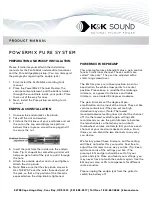
DESIGNER’S HANDBOOK 4189350049C EN
Page 167 of 206
11.13.3.2
Example: the standard heading repeater
This standard heading repeater (compass indicator) is able to use 3 instances of heading data:
Primary: Heading True 1 (with the default source name: GYRO 1)
Secondary: Heading True 2 (with the default source name: GYRO 2)
Backup: Heading Magnetic 1 (with default name MAG. COMPASS)
To select the data type it is using the special fall-back function that we will look into in a later chapter (11.13.3.2.3 A
look in the NMEA input setup menu may help us).
DEIF standard heading repeater, using the rotating “endless tape” indicator for excellent readability even on a long
distance. This indicator also has a rate of turn indicator (ROT) in the top part.
11.13.3.2.1
The NMEA COMPASS data
The NMEA compass angle data is in this example received in the following NMEA sentences:
GYRO 1:
$HEHTD,A,0.0,L,M,T,45.0,25.0,0.5,3275.0,200.0,1.0,250.0,T,A,A,A,270.0*67
Mag.Com 1: $HEHDG,265.5,03.0,E,25.0,E*44
GYRO 1:
$HEHDT,293.5,T*22
ROT 1:
$HEROT,14.0,A*1E (ROT is only sent once and the controller decides the source)
GURO 2:
$IIHDT,271.6,T*20
All are transmitted on the same NMEA input coming from a central heading control unit.
to be able to distinguish between Gyro 1 and Gyro 2 that is both using HDT, the control unit change the NMEA
talker ID for Gyro 2 to II (integrated instrumentation). Note: A north seeking gyro normally use HE.
In this system the operator can change source on the indicator simply by selecting source on the control system
that is only transmitting the NMEA sentence for the heading source that the indicator is supposed to show.
We have stepped through the installation wizard and in the end made an automatic NMEA scan for available
sources and were making sure that all the above NMEA data sentences were transmitted at some time from the
heading control unit when this search for sources was running. (For example, by shifting between the 3 headings
on the controller.)
















































